Marmoset templates and atlases
« Back to main templates & atlases page
Overview
- Brain/MINDS Marmoset Reference Atlas Set (BMA)
- Marmoset Brain Connectivity Atlas
- Marmoset Brain Mapping Atlas and Template
- Nencki-Monash Template
Details
Brain/MINDS Marmoset Reference Atlas Set (BMA)
Authors : The resource development is lead by the Connectome Analysis Unit, Integrative Computational Brain Science Collaboration Division, RIKEN Center for Brain Science, Japan. Full list of contributors: Alexander Woodward, Tsutomu Hashikawa, Masahide Maeda, Takaaki Kaneko, Keigo Hikishima, Atsushi Iriki, Hideyuki Okano, Yoko Yamaguchi, Rui Gong, Ken Nakae, Junichi Hata, Shin Ishii, Hiroshi Abe, Toshiki Tani, Frederic Papazian, Hiromi Masuko, Takuto Okuno, Tetsuo Yamamori, Noritaka Ichinohe.
Description : The Brain/MINDS Marmoset Reference Atlas Set (BMA) provide 3D brain atlases for the common marmoset: BMA 2017: ex-vivo multi-modal Nissl & MRI 3D atlas. BMA 2019: builds on previous work and adds a population average ex-vivo MRI T2WI contrast and cortical flat maps. BMA 2023: a population-based brain atlas constructed from N=10 cortical region parcellations. It includes a symmetric standard template space created from 92 MRI T2WI scans.
Documentation : See website
Link : Download page
Language : n/a
Publication : Woodward et al. (2018)
Communication : cau-contact@ml.riken.jp
Restrictions : This work is licensed under a Creative Commons Attribution 4.0 International License (CC BY 4.0)
Marmoset Brain Connectivity Atlas
Authors : The project is lead by Piotr Majka of the Laboratory of Neuroinformatics at the Nencki Institute of Experimental Biology (Poland) and prof. Marcello Rosa at Monash University (Australia). Full list of contributors.
Description : The Marmoset Brain Connectivity Atlas allows for the exploration of a growing collection of retrograde tracer injections in the marmoset neocortex. Data obtained in different animals are registered to a common stereotaxic space of Paxinos et al. (2012) atlas, and the resource incorporates tools for quantitative analyses. In particular, the results can be downloaded in 3D volume format in a template space which allows for ready comparisons to topologies acquired by MRI.
Documentation : Portal’s application programming interface are available here and here.
Link : http://www.marmosetbrain.org
Language : The portal is implemented in JavaScript, Python, and CSS / HTML. The source code of both components of the http://marmosetbrain.org is released under the GPL license (see: here and here.
Publication : Majka et al. (2020) and Majka et al. (2016).
Communication : Piotr Majka
Restrictions : Material made public on the Marmoset Brain Connectivity Atlas is licensed under Creative Commons Attribution-ShareAlike 4.0 (CC-BY-SA) License. You are free to share (copy and redistribute) and adapt (remix, transform, and build upon) the marmoset-related material in any medium or format as long as you attribute the Marmoset Brain Connectivity Atlas and provide a link to the two URLs the Marmoset Brain Connectivity Atlas and the CC license). If you adapt the material, you must distribute your contributions under the same license as the original.
Marmoset Brain Mapping Atlas and Template
Authors : Cirong Liu, Daniel Glen, Frank Ye, John Newman, Cecil Yen, Diego Szczupak, Xiaoguang Tian, Piotr Majka, Marcello Rosa, David Leopold, Afonso Silva
Description : The Marmoset Brain Mapping Atlas (previously NIH Marmoset Brain Atlas) aims at building comprehensive MRI-based marmoset brain atlases and tools to facilitate neuroimaging and connectome studies of marmosets.
Documentation : Marmoset Brain Mapping site
Link : Marmoset Brain Mapping site
Language : shell, matlab, etc.
Publication : Liu et al. (2018), Liu et al. (2020)
Communication : email
Restrictions : Creative Commons Attribution-NonCommercial-ShareAlike (CC BY-NC-SA 4.0)
Nencki-Monash Template
Authors : The template has been created in collaboration between the Laboratory of Neuroinformatics at the Nencki Institute of Experimental Biology (Poland) and prof. Marcello Rosa Laboratory at Monash University (Australia).
Description : The Nencki-Monash (NM) template represents a morphological average of 20 brains of young adult individuals, obtained by 3D reconstructions generated from Nissl-stained serial sections. The template combines combines the main advantages of histology-based atlases with features associated with MRI-based templates. It is also accompanied with spatial transformations to other popular marmoset brain templates, thus enabling integration with magnetic resonance imaging (MRI) and tracer-based connectivity data.
Documentation : The documentation and examples are available within individual datasets here
Link : nencki_monash_templatee
Language : N/A
Publication : Preprint
Communication : Piotr Majka
Restrictions : Nencki-Monash Template is licensed under Creative Commons Attribution-ShareAlike 4.0 (CC-BY-SA) License. You are free to share (copy and redistribute) and adapt (remix, transform, and build upon) the marmoset-related material in any medium or format as long as you attribute the Nencki-Monash Template and cite the relevant publication. If you adapt the material, you must distribute your contributions under the same license as the original.
